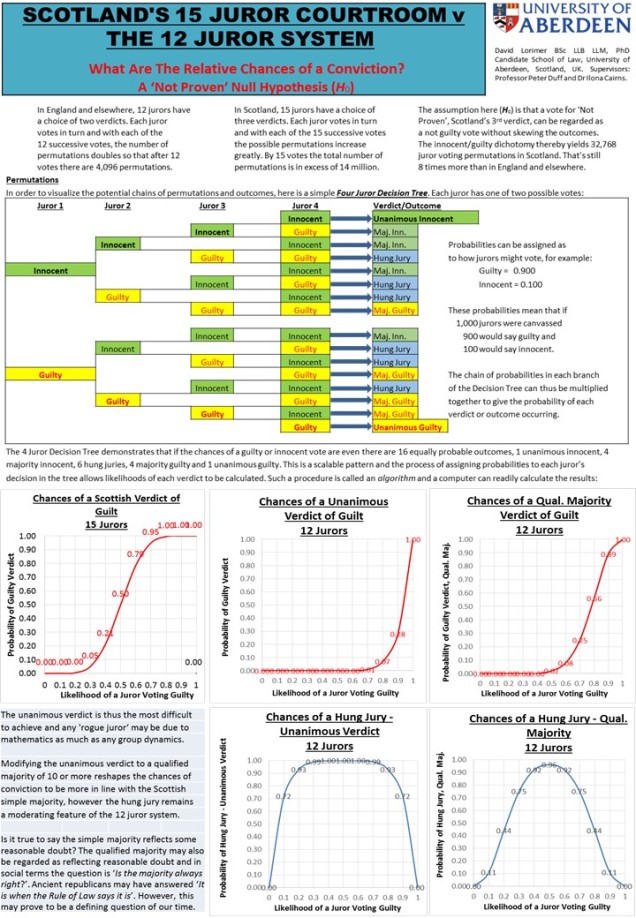This post showcases a poster presentation by PhD candidate David Lorimer
The poster follows at the end of the post. An abstract sets the scene and a note on methodology explains the basis of the work.
Abstract
The 15 juror courtroom may be viewed as a self-compensating system with in-built safety mechanisms to accommodate attrition, diversity and even jury nobbling. The hung jury can be viewed as a de facto third verdict and Scotland’s not proven verdict is arguably a more sophisticated and empowering version of the ‘too close to call’ option in modern comparative jurisprudence – regardless of its historic evolution. In reality every coin has three surfaces.
Quantitative Methodology
The Scottish criminal jury is composed of 15 members compared to the 12 found in other common law jurisdictions. It requires a simple majority verdict which means conviction or acquittal by 8 or more as opposed to a unanimous verdict or qualified majority (usually 10 or more in other jurisdictions). This means that there are no ‘hung juries’ in Scotland. The Scottish system is therefore arguably more efficient but is it less fair? Does it ‘fly in the face of conviction beyond reasonable doubt’ as some commentators have suggested? Quantitative analysis carried out recently at Aberdeen University uses decision tree logic as a basis on which to develop and evaluate probabilities of conviction in both types of jury system. The results are presented graphically and provide a unique perspective on jury analysis, including the observation that the ‘rogue juror’ may be as much a numerical phenomenon as anything else. Consideration of the analysis raises a number of propositions:
- The drivers for a ‘Not Proven’ vote or verdict may be closely related to those which lead to a hung jury, leading to the concept of the ‘Hung Juror’ (see below).
- The simple majority may be a timely indication of how a Scots jury would ultimately vote if given a mandate to reach a unanimous or qualified majority verdict.
- The option to vote ‘Not Proven’ in Scotland vents the pressure on the ‘Hung Juror’ to make a peer driven, biased or otherwise uneasy decision without compunction.
- The hung jury is a de facto third verdict.
What next for the Scottish criminal jury?
Research has been commissioned by the Scottish Government.
Jury verdicts visualised: David Lorimer’s poster presentation
